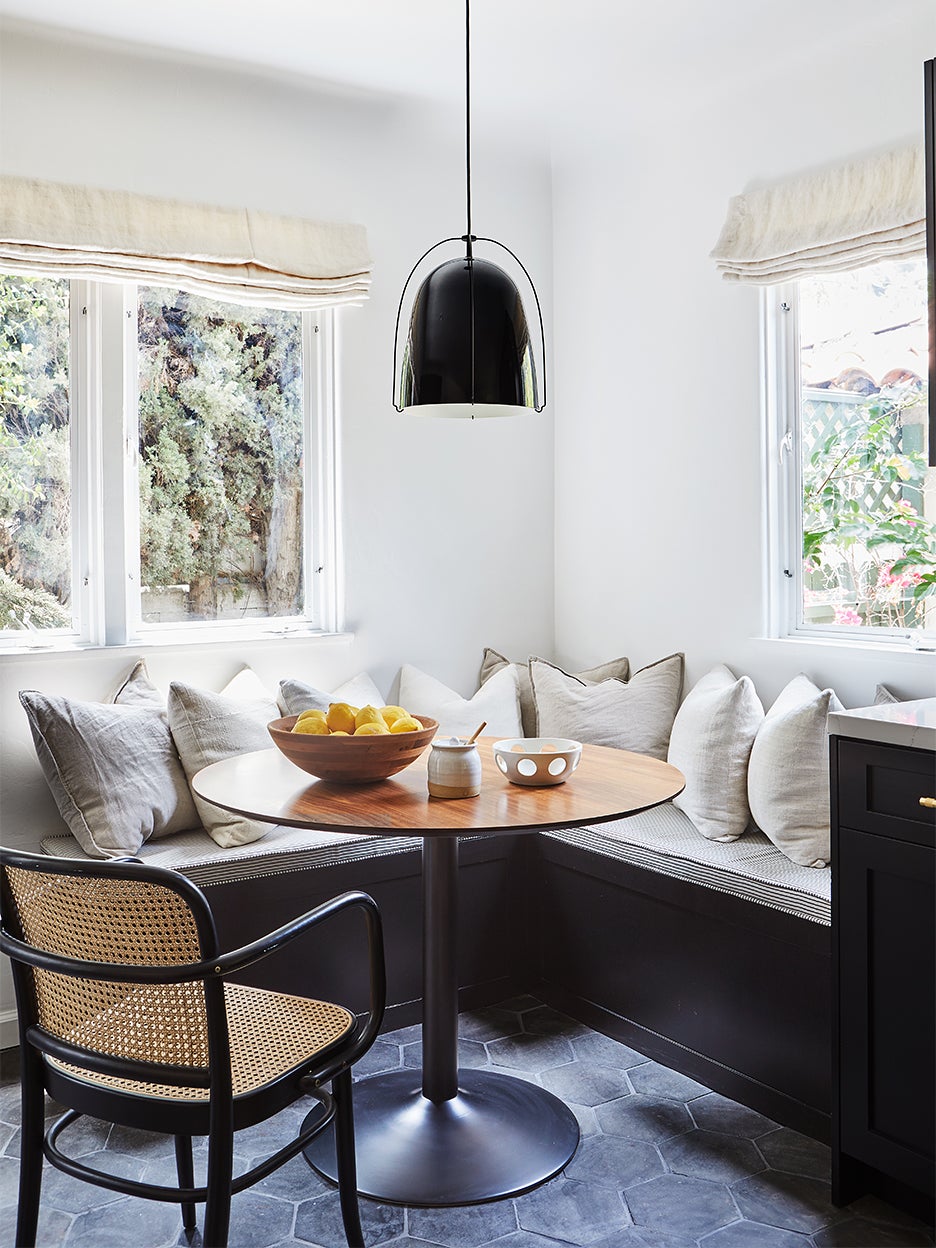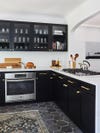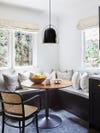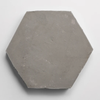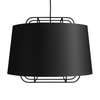An Unexpected Floor Redo Changed This Kitchen for the Better
No vent hood in sight.
Updated Oct 11, 2018 5:45 PM
We may earn revenue from the products available on this page and participate in affiliate programs.
Normally when you’re gutting a kitchen and starting from scratch, you design the new space with cooking in mind, but that wasn’t the case for designers Ashley Drost and Marie Trohman’s Los Angeles–based clients. Most nights the young couple prefers takeout. “The extent of their cooking might be putting a frozen pizza in the oven or boiling water for pasta on the stove,” says Drost. “It just wasn’t a big concern for them.” This gave the Proem Studio founders a lot more freedom when it came to divvying up the budget (they forfeited a backsplash to splurge on terracotta floors) and playing around with the room’s layout.
The walls separating the kitchen from the dining area and the unused mudroom were the first to come down. This simple change doubled the size of the room (it’s now 200 square feet). From there, the pair carved out a breakfast nook in one corner and extended the lip of the new peninsula for additional barstool seating. The only thing that remained from the old space was the refrigerator.
Embrace Unforeseen Fixes
The biggest hit to the timeline and budget was discovering the floor joists weren’t strong enough to support the new construction. “It was too high for the tile we wanted to put down,” adds Drost. “It wouldn’t have turned out even.” Installing a fresh subfloor and crawl space underneath the house took around two months, but there was an upside to the costly upgrade: It gave the designers the chance to run the piping for a downdraft cooktop, meaning they wouldn’t have to install a bulky cooking hood over the stovetop, now situated in the middle of the peninsula, overlooking the dining space. “Even though they don’t cook all that often, they didn’t like the idea of moving out of the way if somebody wanted to put something on the stove,” adds Drost.
Splurge on Timeless Floor Tiles
The homeowners’ edgy design style informed the black cabinet scheme. To warm things up and bring some of the house’s Spanish-inspired elements back into the kitchen, they splurged on tumbled Belgian terracotta floor tiles. “They have that old-world feel,” says Trohman, adding that sticking with mid-grade appliances allowed them to spend a little more on the stone.
Find Your Light
Even though they effectively doubled the size of the room, 200 square feet is still a tight space to work with. Maximizing every corner was of the utmost importance. The sunniest corner happened to be the most logical spot for the breakfast nook (there’s cabinetry everywhere else).
Speak Your Home’s Arch Language
Usually, a house has one arch language, notes Trohman, which can make it pretty tricky when you start adding new curves to an older home. If it’s not exactly right, it will look off. “This one was going to span the whole width of the wall, unlike the other structures, so it had to at least be the same degree,” says Drost.
The designers made a template based on another arch in the home and used that to guide this one’s curvature. It was a touch-and-go process: Every time they’d have it plastered, they’d have to go back and re-sand parts. “It’s such a specific, detectable thing,” says Trohman.
Get the Look
Introducing Domino’s new podcast, Design Time, where we explore spaces with meaning. Each week, join editor-in-chief Jessica Romm Perez along with talented creatives and designers from our community to explore how to create a home that tells your story. Listen now and subscribe for new episodes every Thursday.
